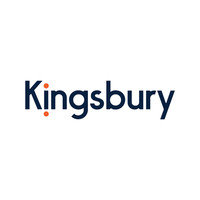The need for accurate and reliable quality control has increased steadily as advancing technologies have pushed the limits of manufacturing. Traditional methods of metrology are not well suited to today’s manufacturing landscape. This is where 3D metrology is beginning to fill the void and provide a solution that is not only better suited to modern challenges but also redefines what is possible in metrology.
What is 3D metrology?
Until relatively recently CMMs (coordinate measuring machines) were the go-to tool for metrologists. They are used to gather dimensional data from manufactured parts and work by moving a touch probe along the X, Y & Z axes to measure multiple data points. A list of coordinates is then generated which can be compared to the dimensions of the nominal part.
3D metrology is a blanket term for a range of scanning technologies that can be used for quality control and various other applications in a manufacturing or production environment. The most common and effective form of 3D metrology makes use of structured blue light – to filter out unwanted ambient lighting – and stereoscopic cameras to accurately scan and measure the part. These cameras determine the dimensions of the part being scanned by using the principle of triangulation coupled with fringe patterns projected onto the part.
How does 3D metrology work?
3D metrology creates a full 3D representation of the component being measured and can then present a colour map of where on the part the tolerances are out of spec when compared to its nominal dimensions. This information can then be fed back into the manufacturing of new parts to improve each consecutive part and maintain the highest levels of accuracy. The typical steps taken during a 3D scan are listed below:
- Sensor positioning & measurement – The part is freely positioned in front of the scanner and either the part moves or the sensor moves around the part to generate the data set.
- Evaluation – The data can then be compared to nominal CAD dimensional data to determine where the actual dimensions deviate from the nominal.
- Reports & results – Finally a set of results can be presented that highlight exactly the problem areas.
Why use 3D metrology?
As technology becomes more complex and the limits of engineering are pushed, parts need to maintain ever-tighter tolerances. These requirements leave very little room for error and as such, more emphasis is placed on process reliability. Traditional measurement tools like CMMs are simply not good enough as they are too slow and do not generate a complete picture of the complex parts that are used in modern manufacturing.
Because of this, 3D metrology has slowly been eating away at the market share of existing CMM technologies. Some of the benefits of this technology are listed below:
- Cheaper than CMM – A typical 3D metrology system is cheaper than a CMM for measuring like-sized parts. Furthermore there are a wide range of 3D metrology systems that can suit any metrology budget.
- Measurement coverage – 3D metrology techniques can generate millions of data points in the time a CMM creates a few hundred, thus creating a more complete picture of the dimensions of the part on all surfaces.
- In-process inspection – Due to the nature of 3D metrology, parts can be measured during production.
3D metrology use case
Repairing existing equipment is always a challenge, and more often than not leads to a deterioration in original performance characteristics. When it comes to advanced components made from exotic materials, replacements are simply too expensive. With continued advances in 3D metrology, a whole new workflow has become available.
One use case of 3D metrology is the repair of existing parts. In order to build up material on the existing part using a metal 3D printer, extremely accurate data of the damaged area needs to be generated. This data can then be used to guide the 3D printer nozzle around the irregular surface on a typical damaged part. Without accurate data there is the very real risk of crashing the nozzle into the part. Traditional metrology techniques would not be efficient on the complex surface of a damaged part as it would take too much time to measure all the relevant points. As such a quick scan can generate highly accurate surface data that can then be used for this purpose. After the part is scanned, repaired and machined, it can once again be scanned to determine whether it is within the required tolerances.
In conclusion
3D metrology is steadily becoming the go-to technology for dimensional quality control in the manufacturing industry. To learn more about how this technology can save your manufacturing facility time and money while also providing new insights into your process, contact a Kingsbury representative today.









